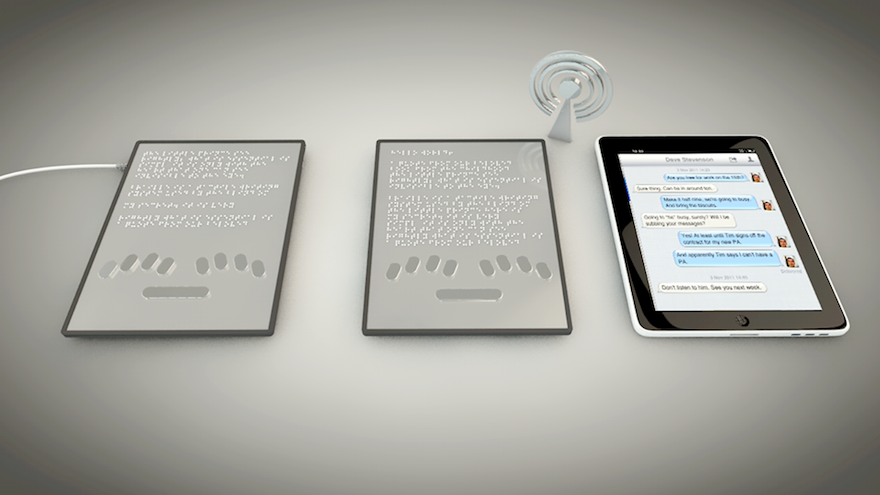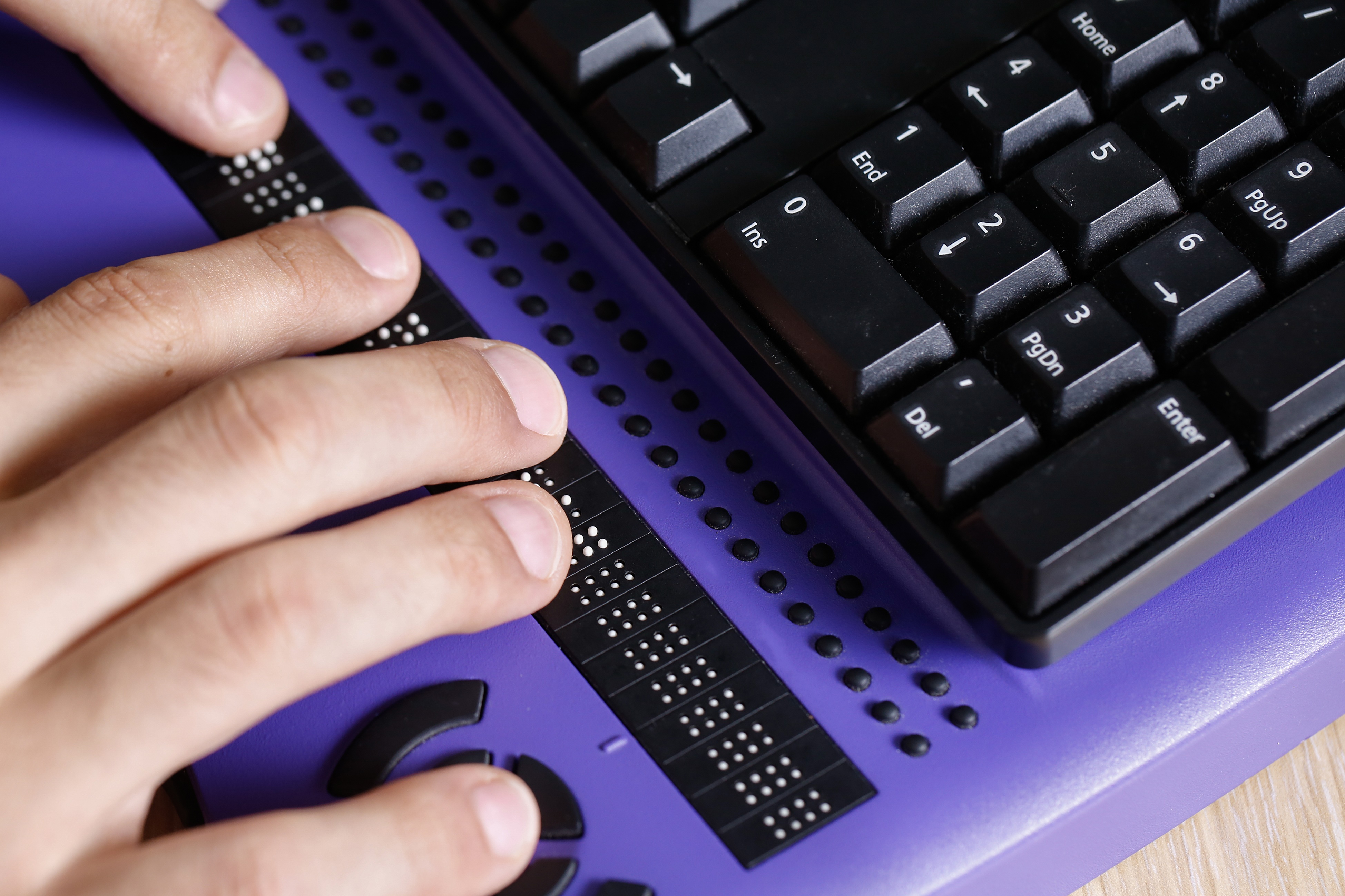OCR Devices for the Blind: Turning Text into Speech with Ease
OCR Devices for the Blind: Turning Text into Speech with Ease
Blog Article
Empowering Self-reliance With Assistive Innovation for the Blind
The integration of assistive technology into the lives of people with aesthetic problems represents a substantial development in promoting self-reliance and self-sufficiency. From cutting-edge display viewers to sophisticated clever canes, these tools not only boost daily navigating and communication yet also empower users to engage meaningfully in different facets of life. As we discover the myriad benefits and real-world applications of these innovations, it ends up being vital to take a look at the underlying variables that contribute to their efficiency and the potential for future developments in this vital area.
Introduction of Assistive Technology

The growth of assistive innovation is grounded in concepts of inclusivity and empowerment. Developments in software application, hardware, and sensory enhancements supply users with options tailored to their details demands. From screen visitors that convert text to speech, to tactile gadgets that share information through touch, these devices transform the means people engage with their surroundings.
In enhancement to useful applications, assistive modern technology promotes greater social incorporation and engagement in various fields, consisting of education and employment (Screen readers for the blind). As research and development remain to progress, the potential for assistive modern technology to further boost the lives of aesthetically impaired people remains appealing, leading the way for a more fair culture where everyone can prosper
Sorts Of Assistive Devices
A range of assistive gadgets have actually emerged to sustain people with aesthetic disabilities, each developed to meet specific demands and improve everyday performance. These devices vary from low-tech services to modern innovations, providing diverse alternatives for users.
Low-tech tools include magnifiers and large-print products that aid in reading and writing. Braille tools, such as Braille stylus pens and slates, make it possible for tactile analysis and interaction. Alignment and mobility aids, like white canes, assist customers browse their environment securely.
On the higher end of the spectrum, electronic magnifying systems and screen visitors offer substantial assistance. Electronic magnifiers permit customers to enlarge text and images on displays, while display viewers convert electronic web content into manufactured speech, assisting in accessibility to details on computers and mobile phones.
Smartphone applications also play a crucial function, providing functions like message recognition and navigating help. Wearable modern technology, such as clever glasses outfitted with increased truth, is becoming an encouraging device to enhance situational understanding.
Advantages of Assistive Innovation
The integration of assistive technology significantly enhances the lifestyle for people with visual problems. These technologies encourage users by advertising freedom, enabling them to browse their environments better and execute everyday jobs with higher ease. Display viewers and magnification software application permit people to access digital info, promoting expert and educational chances that might have formerly been out of reach.
Moreover, assistive devices such as wise walking canes and general practitioners applications supply real-time navigating support, improving flexibility and safety. This boosted autonomy not only boosts self-confidence but likewise urges social engagement, allowing users to take part more totally in their have a peek at these guys communities.
Assistive technology additionally helps with interaction, aiding customers link with others via voice acknowledgment and text-to-speech applications. This ability is vital for keeping connections and accessing crucial details.
In addition, the personalization choices readily available with several assistive modern technologies guarantee that users can customize devices to their specific requirements, further enhancing use and effectiveness. Generally, the advantages of assistive modern technology for individuals with visual problems are profound, promoting an extra comprehensive society where everyone can pursue their goals and goals.
Study and Success Stories
Highlighting the transformative impact of assistive technology, many study show exactly how individuals with aesthetic impairments have successfully integrated these tools right into their every day lives. One compelling example involves a college student that made use of screen reading software application to navigate scholastic products and on the internet sources effectively. This modern technology not just promoted her education and learning but also boosted her confidence in taking part in conversations and team tasks.
One more instance research study features a professional that employs a mobile phone application made for navigating and object recognition. By using this app, he has reclaimed autonomy in both his individual and work atmospheres, allowing him to commute individually and involve with coworkers better.
Additionally, a senior citizen shared her experience with braille e-readers, which enabled her to access a huge array of literature and stay gotten in touch with her area through publication clubs.
These success tales emphasize the vital function of assistive modern technology in cultivating self-reliance, enhancing quality of life, and promoting social combination for individuals with aesthetic impairments (Mobility aids for visually impaired users). By accepting these innovative devices, individuals can get over obstacles and take opportunities that add to their specialist and individual satisfaction

Future Patterns in Assistive Modern Technology
Technology optometrist open on saturday in assistive technology is positioned to redefine the landscape of assistance for individuals with aesthetic disabilities. Emerging patterns stress the integration of fabricated intelligence (AI) and equipment discovering, which boost the performance of devices that assist with navigation and info access. For instance, AI-driven applications are now qualified of translating aesthetic information in real-time, allowing individuals to involve with their environment much more individually.
Additionally, the advancement of wearable innovation is advancing quickly. Smart glasses equipped with increased fact (AR) can supply audio descriptions of environments, changing exactly how users interact with public rooms. These tools not only promote freedom yet also foster social inclusion.
In Addition, the Internet of Points (IoT) is making homes smarter, permitting seamless connection between day-to-day devices and assistive gadgets. This connectivity encourages individuals by allowing voice-activated controls and computerized actions customized to private needs.
Conclusion
In final thought, assistive technology plays a crucial function in encouraging individuals with visual problems by improving their freedom and engagement with their surroundings. The diverse variety of gadgets and applications readily available not just assists in navigating and communication but additionally advertises social combination and possibilities for professional and individual development. As improvements proceed in this field, the capacity for improving the quality of life for those with visual disabilities will certainly increase, cultivating higher autonomy and empowerment.

Report this page